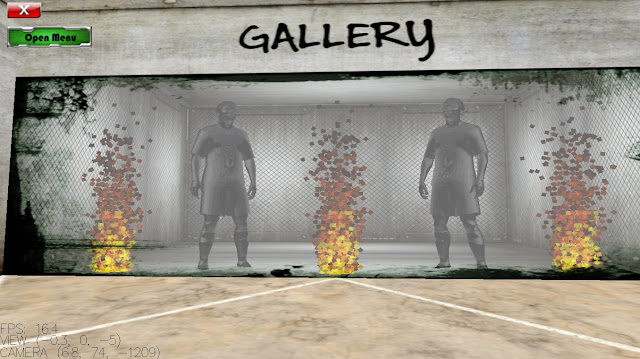[InnerTruce]
Genre: 2D Battle Scroller (Beat 'em up classic)
Platform: Android
Language: C#
Made With: Unity 5
PLAY THE GAME
[Google Play Link]
My final year project.
I decided to work on a genre I've not really touched on, knowing that this would cater for a fresher game making experience.
Going back and forth with my partner, we decided to go on a classic beat 'em up game, with a "soothing" theme touch. With that I went ahead and worked on a game prototype for the project, and the first version of InnerTruce was created (then known as InnerMost).
This is by far one of the biggest projects I've worked on, with intricate back-end systems, battle systems, Google AdMob and leader-board functionalities all implemented. I also tackled some hard to implement systems like the Combo System for the main game, map generating techniques, etc.
Since we needed the game to strongly adhere to a specific theme, our art assets are therefore very important, and royalty-free art does not suffice. We ended up getting an Artist (from our sister course) to work with for this project. It was also the first few times I've worked this closely with an artist, and it was a great first-hand experience.
InnerTruce is about a protagonist stuck in his own dreams, and the only way to escape is to fight his way out. The game itself is a classic beat 'em up game, with the player having to fight his way through multiple dream stages (inception-ish concept) to break out of his nightmare.
I made it a point to make the game look as polished as possible, since we're planning to publish InnerTruce on the Google PlayStore to compete with other industry standard products. The end game looks really good in my opinion, and I was rather satisfied (huge props to our artist here).
We went back and forth several times during the process of making InnerTruce, tweaking many game variables and UI assets before finally arriving at the final version you see right here. I've also worked on a multitude of system algorithms to make sure the game runs as smoothly as possible, and also cater for a dynamic coding practice. The end result is something I feel is a great first game to be published online, and I'm very grateful for this experience. Check out the game yourself right here and give it a shot: InnerTruce
I decided to work on a genre I've not really touched on, knowing that this would cater for a fresher game making experience.
Going back and forth with my partner, we decided to go on a classic beat 'em up game, with a "soothing" theme touch. With that I went ahead and worked on a game prototype for the project, and the first version of InnerTruce was created (then known as InnerMost).
This is by far one of the biggest projects I've worked on, with intricate back-end systems, battle systems, Google AdMob and leader-board functionalities all implemented. I also tackled some hard to implement systems like the Combo System for the main game, map generating techniques, etc.
Since we needed the game to strongly adhere to a specific theme, our art assets are therefore very important, and royalty-free art does not suffice. We ended up getting an Artist (from our sister course) to work with for this project. It was also the first few times I've worked this closely with an artist, and it was a great first-hand experience.
InnerTruce is about a protagonist stuck in his own dreams, and the only way to escape is to fight his way out. The game itself is a classic beat 'em up game, with the player having to fight his way through multiple dream stages (inception-ish concept) to break out of his nightmare.
I made it a point to make the game look as polished as possible, since we're planning to publish InnerTruce on the Google PlayStore to compete with other industry standard products. The end game looks really good in my opinion, and I was rather satisfied (huge props to our artist here).
We went back and forth several times during the process of making InnerTruce, tweaking many game variables and UI assets before finally arriving at the final version you see right here. I've also worked on a multitude of system algorithms to make sure the game runs as smoothly as possible, and also cater for a dynamic coding practice. The end result is something I feel is a great first game to be published online, and I'm very grateful for this experience. Check out the game yourself right here and give it a shot: InnerTruce
InnerTruce Main Menu
Tutorial Stage
Level Selection Screen
Survival Mode
Monsters Spawn Randomly, goal is to beat the timer
Play InnerTruce on the Google Play Store to learn more! :]










































